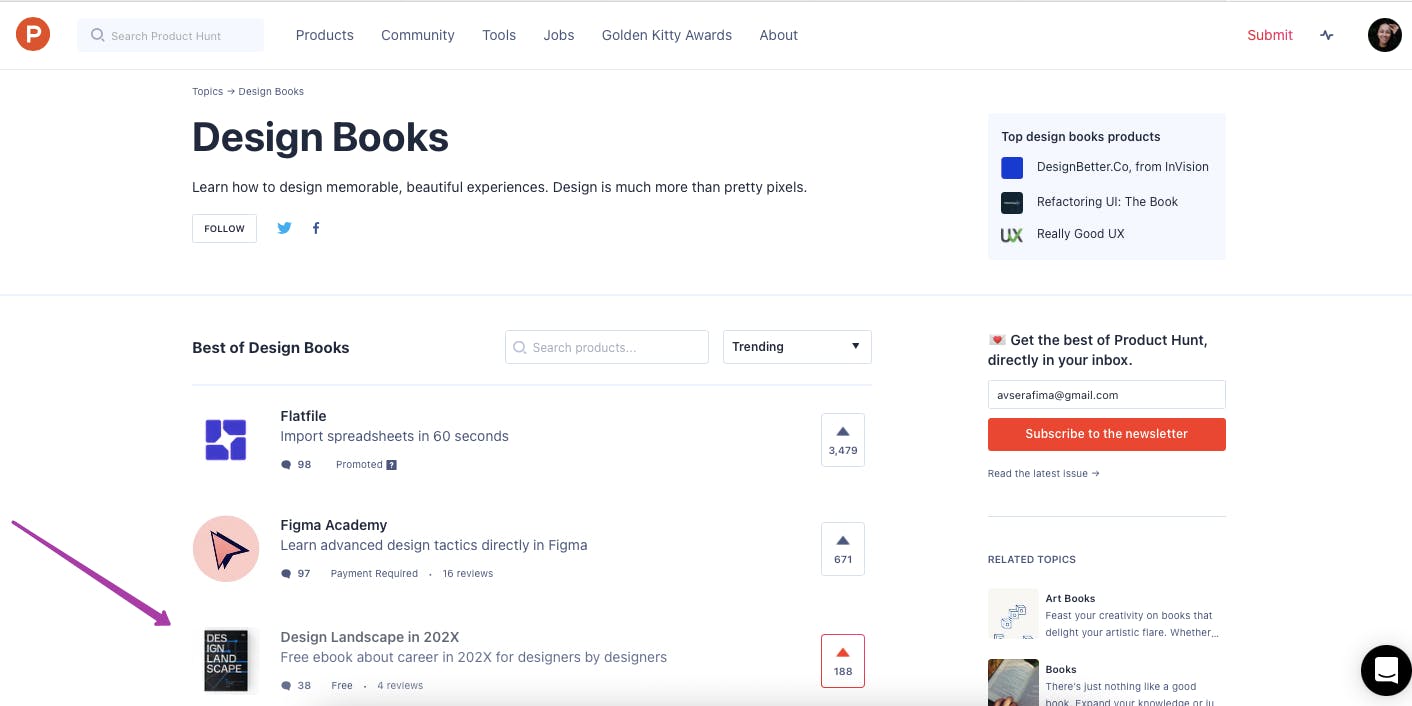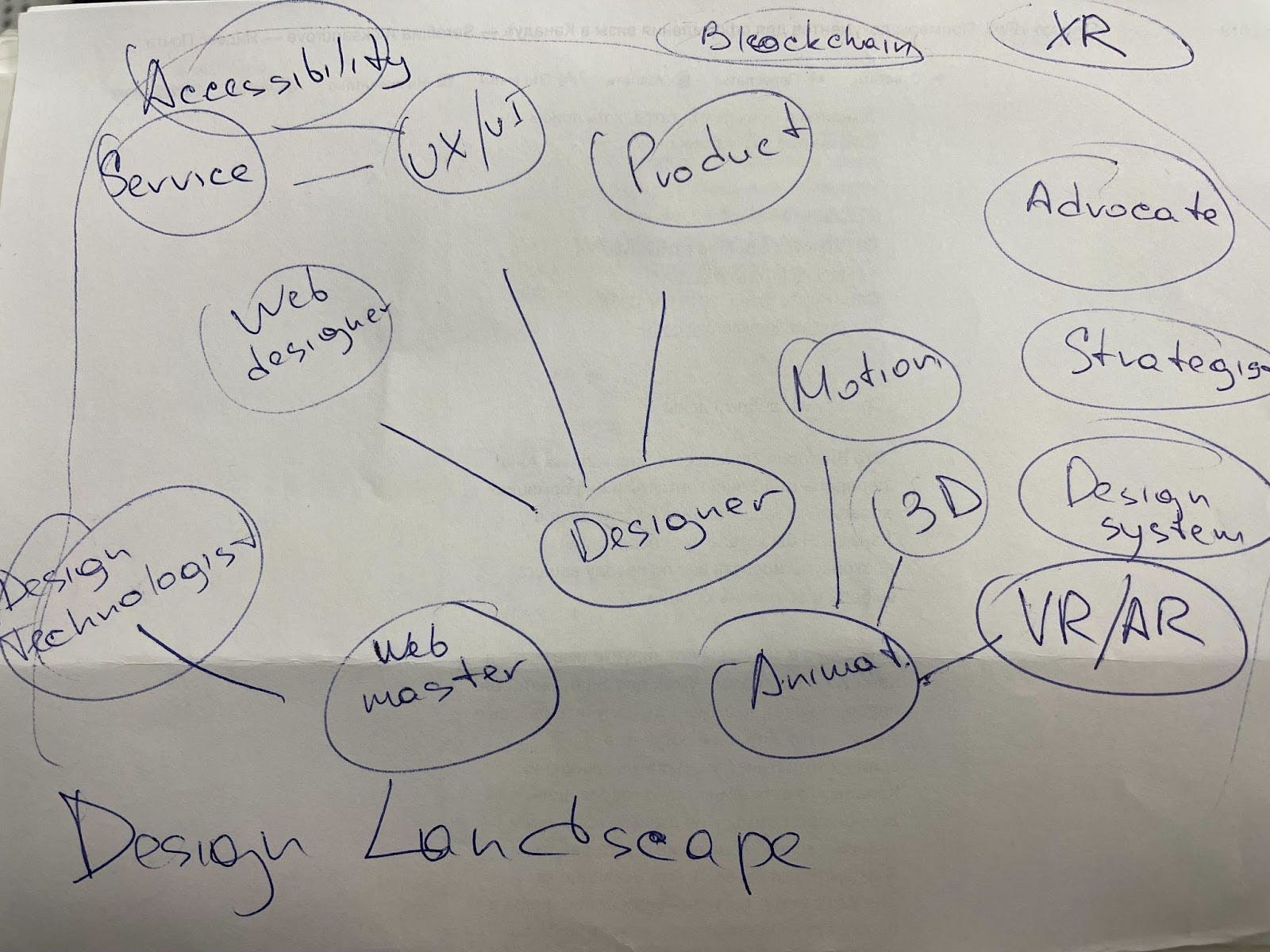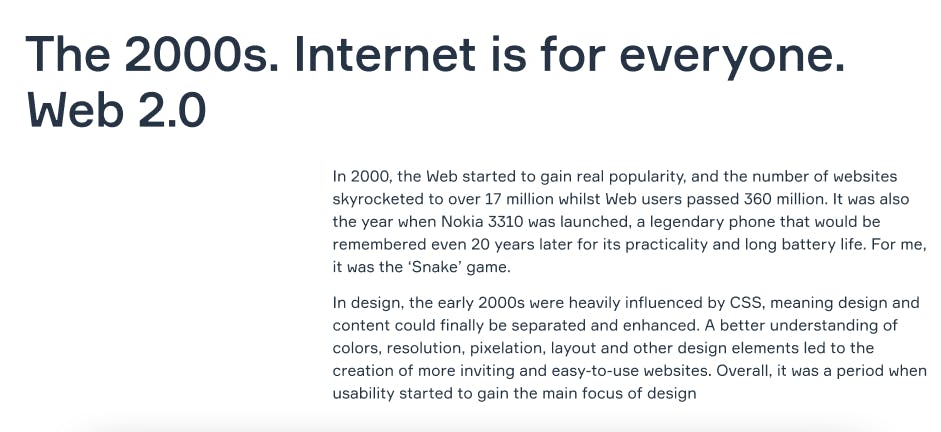8 insights I gained while writing an ebook in 3 months

In September 2021, I started working on my first ebook, about the history and evolution of design jobs.
The project included significantly more writing than I usually do for presentations or interviews. It was a long and exhausting process that required thorough research, a survey with industry experts, production, and the writing part. I wanted it to be a serious and useful yet fun-to-read paper. We published an ebook in January 2022 on Product Hunt, scored 2nd place in the Design Books category, just after Figma’s book, and got featured in the Daily Digest Newsletter, which was an outstanding achievement for us.

As the content producer and writer of the book, I learned quite A LOT during the whole process. Mainly how fascinating and impressive the design industry is and how sophisticated and twisted the recruitment process can be for young, mid-senior level, and even very experienced designers.
Here are the 8 major insights I learned about writing an ebook that I’d like to share with you:
1. It will not be perfect. And that’s ok. This should probably be the first rule of every Fight Club writing course and workshop: good enough is better than perfect. Writing down thoughts and ideas then polishing them is much more productive than staring at the blank page while searching for the perfect line. For me, the most challenging part of writing any piece is this first draft. After that, it’s just down to rounds of editing, proofreading, and finalizing the page.
2. Sell it to your teammates. One of the biggest mistakes I made while working on this book was skipping the onboarding for a designer who worked on turning my writing into an eBook. I assumed the previous designer had discussed the task and shared necessary files. They had, but it wasn’t enough. I should’ve onboarded the designer (I did it eventually) more profoundly and explained the idea behind the project and their crucial impact on it. Also, if it’s an internal project (like in my case with FlowMapp), your teammates should know what’s going on at every stage of project development and feel like they are your team, not subordinates. So let them know how much you value their contribution and translate it in the workflow.
3. Share your progress with someone whose professional opinion you value. Doubt is another mind trick you can escape by sharing the pages and updates with people who can evaluate it professionally. In my case, I had a chat with our Head of Content, Yulia Medvedeva, and FlowMapp Co-founder, @PaulMit. Shout out to both of them! With weekly/monthly updates, you’ll keep yourself accountable and be able to see how much work has been done (if you’re hard on yourself or have anxiety, that’s a big one!) Plus, support and approval bring a sense of accomplishment that you will like, and ease your doubts.
4. Ask for help. You don’t have to do everything alone. I’ve been working in the design industry for less than two years so I asked practitioners to check my hypothesis and see if it makes sense to research it. Don’t be afraid to look stupid and ask simple questions if you need to. This way, you’ll have a chance to write something useful and relevant for the real world, not just another-boring-tip-from-books.
5. Don’t underestimate illustrations. I know, I know, as a person working with designers, I probably should’ve realized by now that illustrations — especially original ones that showcase the complex concepts you created — will take a lot of time to produce! But sometimes one needs to see it to believe it, right? Set clear goals, consult with a design manager beforehand, and create a workflow that works for everybody.
This is the first concept of Digital Design Jobs’ Landscape. Should I sell it as NFT? :)

Here’s the final illustration that was beautifully created by FlowMapp’s Design Lead, Denis Bolshakov.
6. Find a proofreader. :) Honestly, it will save time and calm your nerves to have someone check your pages. You won’t regret it.
7. Laugh. Put some jokes in it; even the nerdy ones that you use with your closest friends can work great in the proper context. I probably watch too much TV and movies, but pop culture references live in my head rent-free. I decided to let the audience get emotionally involved in the story and shake the seriousness off with a funny book and film references when it was appropriate.
Let’s start with an honest thought: you and me, we both have two lives. One is physical, and another one is digital. Even if you don’t use social media or watch videos on YouTube, you’re reading this ebook from a digital device, and you probably have watched a new season of Succession on HBO. Yes, your profile on streaming services and music platforms counts as a ‘digital life’ too.
👆 A part from Introduction of ‘Design Landscape | A Complete Guide to Design Jobs in 202X’. Go, Shiv Roy! :)
Here’s another reference from my personal life:

A part from the 2nd chapter of ‘Design Landscape | A Complete Guide to Design Jobs in 202X’. Yes, I really did like the snake game A LOT. But who didn’t?
8. Make it your own. Honestly, you’ll see tons of beautiful and insightful books that you might want to copy something from. It’s ok to get inspired by the millions of books that came before yours, but do create in your own way.
With this book, I wanted to be my authentic self. I emphasized that in the second part, about the history of design, where I analyzed several scientific research papers and wrote in a clear, professor-ish style, like I was taught in university. So it took a lot of time to edit and polish this part, but we left unnecessary terminology and bombastic academicism behind.
Rule #1 strikes again, because when the first draft was ready, I knew what to do next.
Lastly, don’t take yourself too seriously! Take breaks when you need them to avoid overworking and let yourself write without second-guessing every step of the way. It’s probably going to be messy but totally worth it!
Let me know if these tips help you, and send me your stories at serafima@flowmapp.com.
You can check out the ebook here for free.
Comments (21)
Kim Salmi
Developer
Serafima Aleksandrova
Content Marketing Manager
Garry Lynch
Senior Developer
Shai
Maker of Chapterr & Damnnnn ✨
Sandeep Acharya
Bootstrapping docswrite.com
Chris Davis
Founding Partner @Bootstrapital
Paul Mit
💎 Founder @Aaply, @FlowMapp
More stories

Aaron O'Leary · Announcements · 2 min read
Introducing Shoutouts

Finn Lobsien · Opinions · 5 min read
Can Devin AI Replace Product Managers?

Aaron O'Leary · News · 2 min read
Meet Nvidia's new localized AI chatbot

Sarah Wright · News · 2 min read
The top 15 AI products from 2023


